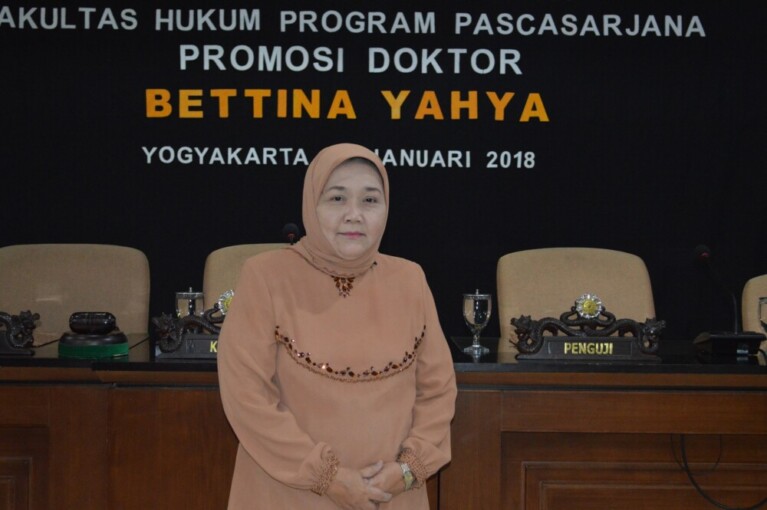
Various efforts have been made to eradicate corruption, including the improvement of rule of law for eradicating corruption methods which continue to develop.
Many law amendments regarding corruption eradication which aim to arrange a more concrete and firm politics of law can not always be implemented comprehensively, efficiently, and effectively. On the other hand, dealing with corruption issue is not only related to an actual law amendment but also other law enforcement forms, which are supporting law structure and culture.
Bettina Yahya, S.H., M.Hum., High Judge in the Indonesian Supreme Court, said corruption done by a corporation is mentioned in Law Number 31 in 1999 in conjunction with Law Number 20 in 2001 regarding Corruption Eradication which states the legal subjects who can be sentenced due to corruption are individual or corporation. Article number 20 paragraph (1) provides an opportunity for prosecution and punishment toward corruption committed by or on behalf of a corporation, that is, only the management, only the corporation or toward its board and corporation.
“The fact shows all this while, many management boards of a corporation are prosecuted to the court with charges of committing corruption while very few corporations are prosecuted as the perpetrators of corruption, such as the corruption case of Bank Century, Hambalang case, cows import by PT. Indo Guna Utama, and so forth,” said Bettina on Tuesday (30/1) during an open examination for Doctoral Programme at Faculty of Law UGM.
Defending her dissertation entitled Corruption Proof Committed by Corporation as an Effort to Restore National Financial Losses, Betty said the Law of Criminal Procedure which only mentions individual legal subject (Article 143 Paragraph 2) can complicate the judicial proceedings in making indictment, prosecution, and verdict against the defendant of the corporation regarding the identity of the suspect and/or the defendant. Law on Corruption Eradication, particularly Article 20, is considered by the law enforcer as an unclear regulation where its application raises different interpretations.
Betty said the determination of corporation as a legal subject who commits corruption has been implemented for a long time, however, there were only 2 cases where the corporation was examined from the beginning of the investigation, prosecution, until the punishment. Those were PT. Giri Jaladhi Wana and PT. Cakrawala Nusadimensi.
“There are legal technical constraints in terms of processing corporation as the perpetrator of corruption as it is considered as an unclear regulation by the law enforcer. Other constraints are that the law enforcer is not fully able to prove the corruption committed by corporation, the proof is quite complex and requires a functional relationship among them, as well as the influence of this principle is delinquere no potest (Article 59 of Law of Criminal Procedure) which defines only human who is responsible and sentenced,” said Betty whose promoter was Prof. Hawin, S.H., LL.M., Ph.D. and co-promoter was Prof. Dr. Edward O.S. History, S.H., M.Hum.

